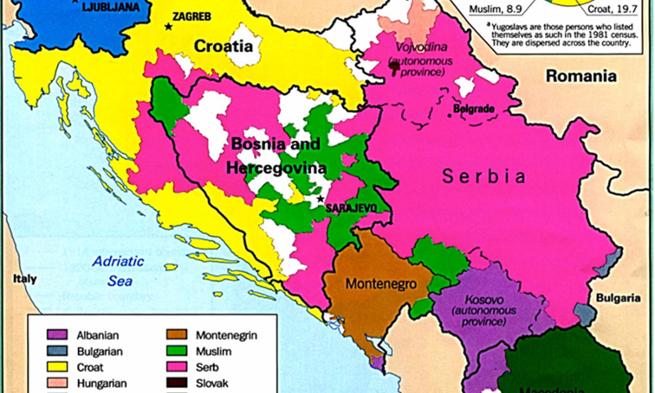Conflict in Bosnia
Nation and World
SUMMARY: The ethnic conflict in Bosnia became the most destructive crisis in Europe since the end of World War II and provides sobering insight into current crises around the globe.
After the fall of the Berlin Wall in 1989, most of the countries in Eastern Europe made the transition more or less quickly and peacefully to democratic governments and market economies.
Yugoslavia, however, was different. Starting in 1991, and for most of the following decade, Yugoslavia was wracked by violence as various ethnic groups fought among themselves and the country disintegrated.
Initially the U.S. government was not deeply engaged with this problem. Officials in Washington were concerned with more strategically significant crises such as the Iraqi invasion of Kuwait, the collapse of the Soviet Union and the reunification of Germany. The American government left the handling of the fighting in the former Yugoslavia to the European Union and the United Nations. These two international organizations provided humanitarian aid and peacekeepers, among other things, but were unable to stop the conflict.
As time went on, the fighting, especially in Bosnia, continued and became the most destructive crisis in Europe since the end of World War II. Tens of thousands died; and half of the Bosnian population—some 2,000,000 people—became displaced within Bosnia or refugees in other countries. There was also massive damage to infrastructure and private property.
Finally, in 1995, after years of only fitful involvement, the United States reversed its long-standing policy and decided to commit its resources, including possible use of military force, to stop the conflict.
In November 1995, as a result of this use of American power, the warring groups signed the Dayton Peace Accords and ended the fighting; a peace that still holds.
The documents released from the archives of the Central Intelligence Agency in September 2013 show how American policy evolved from 1992 to 1996 and the role of intelligence in that process. The collection also includes materials from the Department of State and the National Security Council. These documents are especially noteworthy because it normally takes 30 years or more for sensitive intelligence documents to be declassified.
